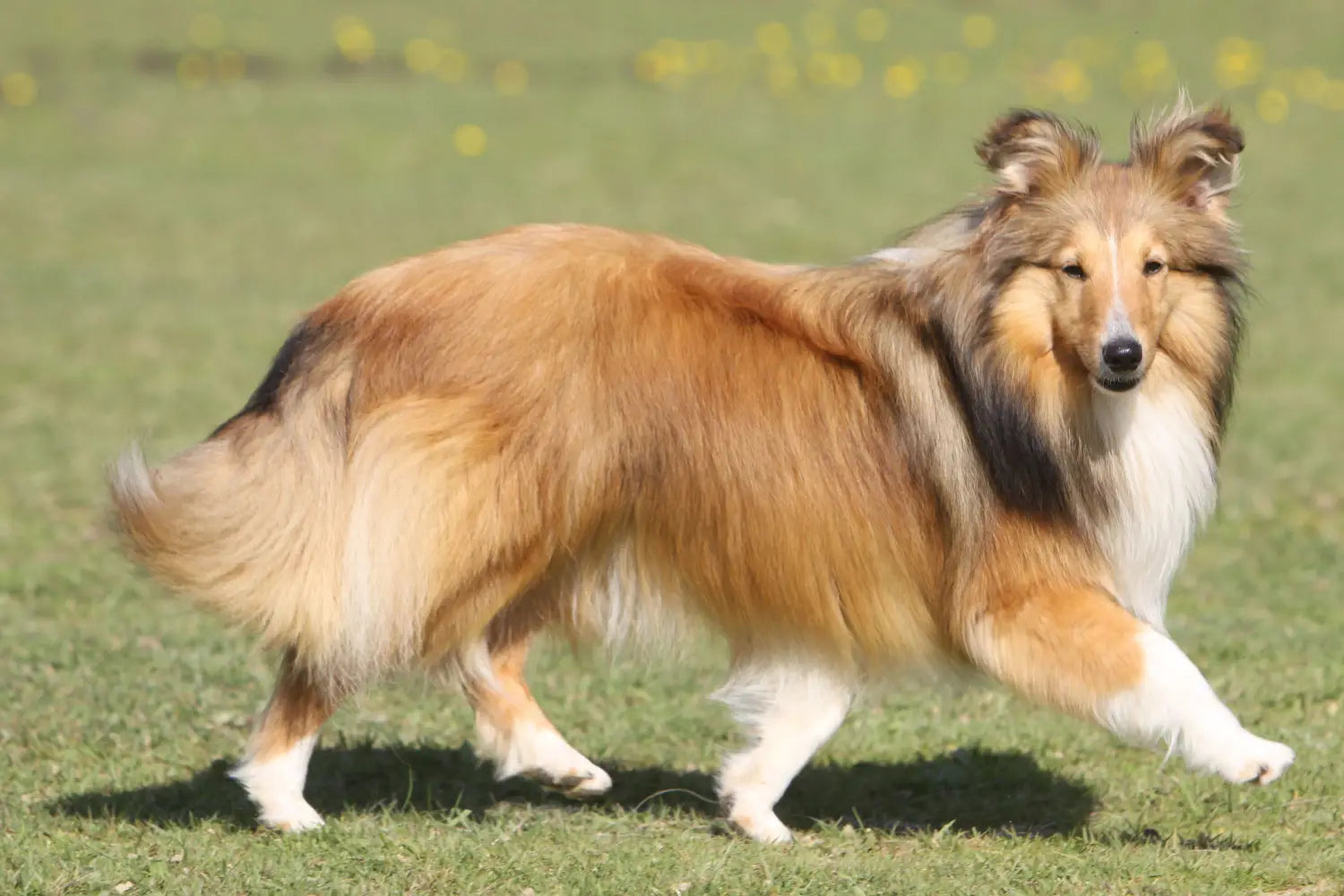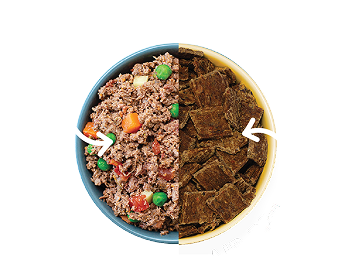
All About the Shetland Sheepdog
Table of Contents
- WHAT ARE THE PHYSICAL CHARACTERISTICS OF THE SHETLAND SHEEPDOG?
- WHAT IS THE HERITAGE AND HISTORY OF THE BREED?
- WHAT IS THE SHETLAND SHEEPDOG'S TEMPERAMENT AND BEHAVIOR?
- HOW MUCH TRAINING AND SOCIALIZATION DO SHETLAND SHEEPDOGS NEED?
- WHAT IS THE SHETLAND SHEEPDOG’S HEALTH AND CARE NEEDS?
- WHAT ARE THE BREED-SPECIFIC CONCERNS FOR SHETLAND SHEEPDOGS?
- HOW DO I CHOOSE AND CARE FOR A SHELTIE?
- Shetland Sheepdog Feeding Chart
- EMBRACING THE SHELTIE LEGACY: A JOURNEY OF COMPANIONSHIP AND CARE
The Shetland Sheepdog is a breed where the spirit of Scotland’s windswept Shetland Islands comes alive. Affectionately known as the “Sheltie,” these dogs are treasured for more than their striking appearance.
They bring a heritage rich in history and a character full of heart to every family lucky enough to call them a member. The American Kennel Club (AKC) celebrates the Sheltie for their agility, intelligence, and steadfast companionship.
As we explore this guide to Sheltie care, our team at A Pup Above will take a closer look at their legacy and the love woven into every fiber of their being.
WHAT ARE THE PHYSICAL CHARACTERISTICS OF THE SHETLAND SHEEPDOG?
The Shetland Sheepdog has a magnificent double coat that is as functional as it is beautiful. With a dense undercoat and a long, water-resistant outer coat, this coat comes in a palette of colors, including sable, blue merle, and a tapestry of others.
While they share the noble countenance of their larger cousin, the rough collie, Shelties are distinct in their smaller stature, making them the perfect small dog with a big heart. Averaging between 13 and 16 inches in height, they embody the grace of the Scottish Highlands, and despite their size, they are sturdy and active.
WHAT IS THE HERITAGE AND HISTORY OF THE BREED?
On the rugged Shetland Islands, where resources were precious and the land was harsh, the Sheltie emerged as a versatile and invaluable companion to the islanders. Bred to herd sheep, ponies, and poultry, the Sheltie was once known as the Shetland Collie.
Though their past is interwoven with various breeds such as the Collie, Pomeranian, and King Charles Spaniel, they emerged as a distinct breed, tailored by the need for a smaller, robust dog capable of withstanding the climatic and geographical challenges of the islands.
It wasn’t until the 20th century that these nimble herding dogs trotted their way into the hearts of dog enthusiasts beyond their Scottish home, shedding their “collie” moniker to become the Shetland Sheepdog.
With each bark, they carry with them the legacy of their homeland and the toil of their ancestors. This deep-rooted heritage is a testament to their resilience and a chapter in the broader narrative of the human-canine bond. This chapter began on a small island but now stretches across continents and into the annals of dog breeding history.
WHAT IS THE SHETLAND SHEEPDOG'S TEMPERAMENT AND BEHAVIOR?
Shelties have a temperament that sparkles with affection, intelligence, and a watchful nature, making them not just pets but partners through every chapter of life. Their herding legacy gives them an active mind that thrives on mental stimulation and tasks to keep them engaged.
Despite their small size, they carry the heart of a lion, often excelling in dog sports and activities that challenge their minds. Yet, their sensitivity and gentleness shine brightest in the home, where they interact with young children and adults alike with intuitive compassion, always mindful of the family dynamics.
The Sheltie's energy level is a testament to their working dog heritage. Because of this, they require daily engagement through play, training, or a good romp in the yard to channel their vibrant spirit positively.
HOW MUCH TRAINING AND SOCIALIZATION DO SHETLAND SHEEPDOGS NEED?
The Shetland Sheepdog is as enthusiastic about learning new commands as they are about their family members. Dog training should commence during puppyhood, establishing a routine that will foster a well-behaved and socially adept adult dog.
Positive reinforcement works well with Shelties, as they respond to encouragement far better than to harsh words. Early socialization is especially important for this breed, which includes introducing them to various people, pets, and environments to cultivate a confident and adaptable disposition.
The Sheltie's natural inclination to be a watchdog can be nurtured through training, teaching them to discern between normal and concerning situations, thus preventing excessive timidity or barking. This dog breed's loyalty and intelligence make them quick studies in obedience and beyond.
WHAT IS THE SHETLAND SHEEPDOG’S HEALTH AND CARE NEEDS?
Shelties are generally robust, with a lifespan that brings joy to families for around 12 to 14 years. Like any breed, however, they are predisposed to certain health problems and conditions.
Being aware of issues such as hypothyroidism, hip dysplasia, von Willebrand disease, and dermatomyositis enables owners to partner with veterinarians to keep their Shelties in fine fettle. Due to their double coat, grooming needs are significant — regular brushing is non-negotiable to manage their dense undercoat and to keep their outer coat gleaming.
It's not just their coat that needs attention. Diet plays a pivotal role in maintaining their health and vitality.
The right dog food will support their energy levels, prevent weight gain, and cater to their size and metabolic needs. Regular exercise and mental challenges keep them physically fit and mentally sharp, ensuring they age as gracefully as the misty Scottish hills they hail from. Remember, a happy Sheltie is well cared for, both in body and soul.
WHAT ARE THE BREED-SPECIFIC CONCERNS FOR SHETLAND SHEEPDOGS?
The Shetland Sheepdog comes with specific considerations that prospective owners must heed. Responsible breeders are the custodians of the breed's future, laboring to ensure each litter is healthy and true to the breed's storied lineage.
Breeders have to look out for specific hereditary diseases, often engaging with veterinarians to conduct genetic testing for ailments like hypothyroidism and von Willebrand disease. Protecting this breed extends beyond breeders to owners who must be informed about these conditions.
HOW DO I CHOOSE AND CARE FOR A SHELTIE?
Selecting this breed means understanding their unique characteristics and needs. Prospective owners should seek Sheltie puppies from reputable breeders who prioritize health, temperament, and adherence to breed standards.
When bringing a Sheltie home, creating ample space for exercise is key. A fenced yard is ideal for their physical well-being.
Caring for a Sheltie goes beyond providing a proper diet and regular grooming. It involves engaging them with training that stimulates their intelligent minds and satisfies their inherent work ethic.
The right dog food for a Sheltie must nourish them adequately, bearing in mind their size and energy levels to prevent the pitfalls of overfeeding. Education on proper care, routine veterinary visits, and a dedication to their physical and emotional needs will ensure that the Sheltie thrives, becoming a best friend whose life is as enriched as they make the lives of those around them.
Shetland Sheepdog Feeding Chart
Now that you understand the spirited nature and physical demands of the Sheltie, you might be wondering, "How do I keep my Sheltie healthy and satisfied at meal times?"
Here's your comprehensive guide to feeding your Sheltie through every stage of their life.
Feeding Guide by Life Stage:
- Sheltie Puppies (under 1 year): Your sheltie puppy is a bundle of energy, requiring a high protein puppy food to support their rapid growth. Supplements like fish oil are fantastic for supporting brain development and ensuring a luxuriously shiny coat.
Amount of Food: A sheltie puppy typically needs about ¼ to ⅓ cup of food per meal, served three times a day. The exact amount can depend on your puppy’s weight and their activity level.
Snack Time: It's important for their socialization to integrate treats into training. For some ideas, check out our article, “Puppy Socialization Protocols and Tips.”
- Adult Shelties (1-7 years): As they mature, it’s time to switch to a food formulated for adult dogs, which balances energy and maintains a healthy weight. Consider grain-free options if your dog shows signs of allergies.
How Much to Feed: An adult Sheltie does well on about ½ to ¾ cup of food per day, divided into two meals. Adjust this based on their exercise needs and dog’s weight to avoid obesity.
Tasty Extras: To keep mealtime exciting and nutritious, vary their diet with a mix of kibble and fresh foods. Don’t forget a sprinkle of probiotics for good stomach health (learn more about probiotics for dogs here!) and fatty acids to keep their coats gleaming.
- Older Shelties (over 7 years): Aging Shelties need tailored nutrition to support their slowing metabolism and maintain muscle mass. Foods with adjusted calorie levels and easy-to-digest carbohydrates are ideal to manage their health as they age.
Feeding Amounts: Reduce portion sizes slightly to match their decreased activity level. Consider softer foods if dental health is a concern, ensuring they continue to enjoy their meals without discomfort.
EMBRACING THE SHELTIE LEGACY: A JOURNEY OF COMPANIONSHIP AND CARE
To embark on a journey with a Shetland Sheepdog is to walk a path lined with companionship, challenge, and unparalleled reward. The Sheltie is a breed that encapsulates the resilience of Scotland's landscape and the warmth of its hearths. They are echoes of the past and companions for the present, embodying the spirit of their island heritage.
Owning a Sheltie requires an embrace of their history, an understanding of their nature, and a commitment to their care. It's a bond that calls for responsibility as much as it does for love.
As the keeper of a Sheltie, you’re also a steward of a storied lineage and the trusted friend of a soul whose capacity for affection knows no bounds. Keep your friend happy and healthy with nutritious food from A Pup Above.
Sources:
Top Stories

Why Do Dogs Lick Their Paws?

Why Do Dogs Whimper & Make Noises in Their Sleep?

Healthy Vet-Approved Homemade Dog Food Recipes

How To Cook Sweet Potatoes for Dogs






















